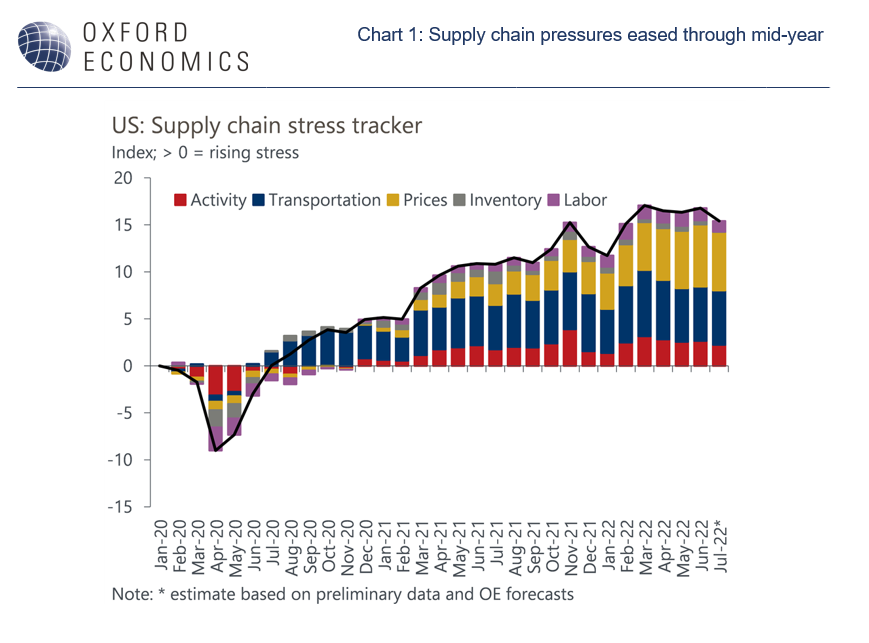Improving supply chain conditions kick off H2 in the US
Supply-chain conditions in the US offered encouraging signs to start Q3, according to our supply chain tracker. Inflationary pressures ebbed and logistics challenges eased. Labor market dynamics improved while inventories maintained their ascent. Cooler activity resulted in a healthier balance between demand and supply.
What you will learn:
- Commodity prices declined 8% on average in July, and regional Fed and ISM surveys signaled lower price pressures. Costs will remain high in H2 2022, but we should see inflation prints start to come down as demand begins to align with supply.
-
Cargo ship backlogs in Southern California declined for the sixth straight month, and other modes of transport also signaled reduced stress. Shipping prices were flat or fell. Conditions are improving, but geopolitical risks continue to cast a shadow over logistics.
-
Labor market conditions were heartening as the economy created a robust 528k jobs, and overtime hours fell again. We look for reduced consumer demand, high costs, and lower profitability to bring worker demand and supply into greater equilibrium.

Tags:
Related Services

Post
US Key Themes 2026: Exceptionalism amid fragmentation
US exceptionalism is alive and well, and that won't change in 2026.
Find Out More
Post
US Bifurcated ꟷ Economic backdrop deepens racial disparities
Black and Hispanic households have experienced more inflation than other groups since the reopening of the economy from the pandemic lockdowns. Although there've been many phases of high inflation, some have disproportionately hurt these minority groups, such as the jump in energy prices following Russia's invasion of Ukraine, with the ensuing surge in rental inflation further setting them back.
Find Out More
Post
US economic outlook 2026: Four key calls for the year
US exceptionalism will continue in 2026—but so will the vulnerabilities beneath the surface.
Find Out More